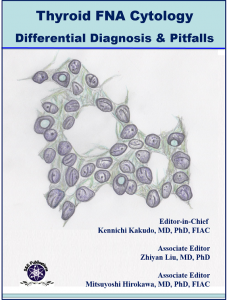2016/8
Why we have differences in clinical managements?
2016/08/20
The following 2 examples were prepared to explain how our different cultural back ground impacts on our decisions making processes. The following two cases, different conclusions, and patients’ reactions in Japan, may not occur in Western societies, but may happen in other Asian societies.
Case 1:
A young woman visited Kuma Hospital for a second opinion consultation. The patient had been treated for Graves’ hyperthyroidism with anti-thyroid medication at the other hospital. She was found to be pregnant after a low dose radioactive iodine (RAI) scintigraphy and she was advised to have an artificial abortion by her doctor. It was her first pregnancy and she wished to have the baby. Her questions to us included what kinds of abnormalities, and the probability that these abnormalities would occur in her baby. Dr Kuma, the president of Kuma Hospital, advised her to have the baby after his thorough explanation. The patient stopped crying and contented with his advice. After she left our consultation room, I asked Dr Kuma how sure about his advice he was. He told me, “At this moment, nobody knows whether her baby will have an abnormality or not (only God knows what will happen to the baby), and she needs someone who supports her choice to have her baby”. Several years later Dr Kuma told me that the patient had a healthy baby. Dr Kuma, as a Christian, thanked God that he could save a life. In Japan, many physicians would probably advise her to have an induced abortion, similar to the advice of her previous doctor, which is the only method to avoid possible abnormalities that might occur in the baby due to RAI radiation; however, she decided to take a chance and have the baby. The author of this chapter believes that diagnostic surgery in all patients with indeterminate nodules, so as not to miss the rare occurrence of malignancy, is similar to a physician recommending an induced abortion to avoid the relatively rare chance of radiation-induced congenital anomalies in an unborn baby. Since thyroid cancer is indolent and a delayed surgery does not create any harm to the patient the author of this chapter believes that the choice to opt for surgical intervention should not be rushed, and should be applied only when high-risk clinical features are observed during active surveillance (watchful follow-up). This is largely because we cannot replace the resected thyroid lobe when the nodule is benign, and a significant number of patients with thyroid lobectomy develop hypothyroidism, which is harmful to patients.
Case 2:
A young woman visited a hospital for her thyroid nodule. A thyroid FNA cytology was performed and it was interpreted as suspicious for PTC type malignancy. The patient was advised to have surgery, according to the clinical guidelines of the Japan Thyroid Association (JTA). She initially did not accept this advice and was followed-up clinically at her hospital, because she knew many thyroid cancers were indolent and that active surveillance was one choice. The doctor advised her 3 times to have surgery. She finally accepted his advice and histological diagnosis of her thyroid nodule revealed it to be a benign adenomatous goiter. The patient filed a lawsuit with the court and asked for damages from the hospital and the cyopathologist. This was the first lawsuit in Japan involving diagnosis of thyroid FNA cytology, using key words “thyroid” and “FNA cytology” and (“false positive” or “false negative” or “missing malignancy”) in a database of judicial precedent in Japan. I was invited to provide a written statement of an expert opinion on cytological diagnosis. Although a small probability of benign diseases had been explained to her before the surgery, she was not happy with the unnecessary alarm caused to her and the surgery. Her biggest concern was a suture wound on the anterior of her neck. Some Japanese people do not like to damage their own body, which they believe was given to them by God/Buddha/Deities/Nature, and believe it is important for them to keep their bodies as natural as possible. Cosmetic surgery and tattoos are not popular in Japan compared to other countries, which is related to this principle. There have been no lawsuits related to missed malignancy of thyroid FNA cytology in Japan, this author assumed that missed thyroid malignancy can usually be rectified by surgery when malignancy was clinically evidenced, and a delayed surgery does not usually create any harm to the patients with low-risk thyroid cancer, which is different from other organ systems where many tumors are lethal and a delayed surgery should be avoided.
category: To Clinician , To Patient comment: (0)
Which do you prefer?
2016/08/19
category: To Patient comment: (0)
Thyroid FNA Cytology: Differential Diagnoses and Pitfalls
2016/08/16
category: To Clinician , To pathologist comment: (0)




